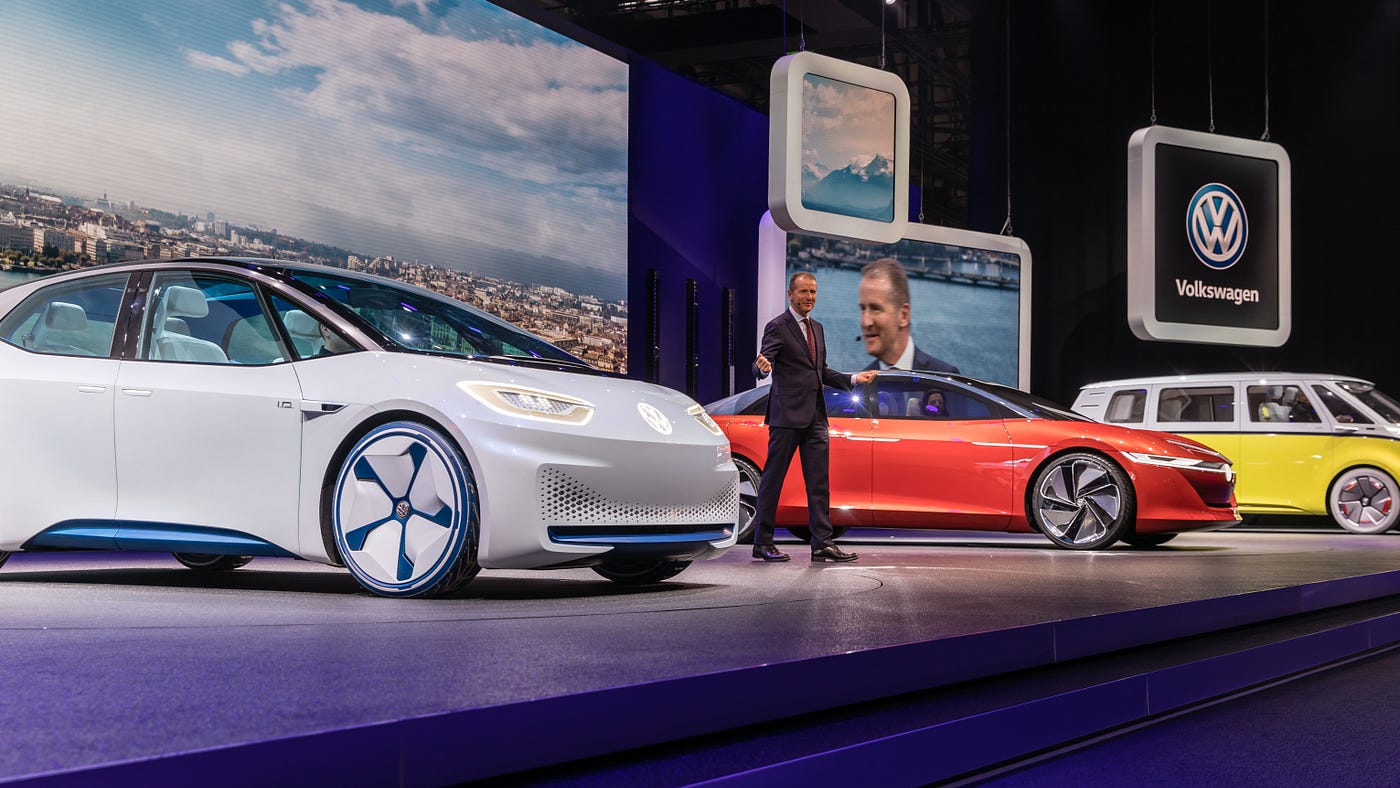Introduction to Automotive Emissions and Technology
At a time when the world is faced with the very immediate problem of climate change, automotive emissions have grown to be one of the major contributors to air pollution and global warming. Vehicles account for almost 29 percent of greenhouse gas emissions in the United States alone, a statistic that indicates how grave the need is for innovative solutions. While traditional internal combustion engines have been the backbone of the automotive industry for over a century, they burp out harmful pollutants – including carbon dioxide, nitrogen oxides, and particulate matter – into the atmosphere.
However, technology has been the reason for rapid changes in automotive sectors. Advances in electric vehicles are ushering in a cleaner future and greatly reducing the consumption of fossil fuels. Further, hybrid technologies, fuel cell systems, and advanced battery storage solutions have emerged as promising alternatives that reduce emissions without compromising performance. Beyond vehicle design, such innovations as smart traffic management systems and better fuel efficiency technologies have been playing an important role in mitigating emissions.
As we delve into that juncture where automotive emissions meet technology, it becomes quite apparent that the use of such technologies is no longer an option but a necessity if there has to be any life left on Earth. The journey to cleaner air and a healthier planet begins with the technologies that redefine how we get around.
Current State of Automotive Emissions
The automotive industry stands at an important juncture because it balances the most contentious issue of emissions. Minimally, one-quarter of the greenhouse gas emission comes from transportation; therefore, road vehicles contribute a lot to this setting. Whereas the gasoline and diesel engines are improved over the years, they still emit harmful pollutants into the air, including nitrogen oxides and particulate matter, which continue to worsen air quality and accentuate climate change.
However, this has been the changing landscape. Worldwide, regulatory frameworks are getting tighter, thus forcing manufacturers to innovate or get fined. As such, most automobile manufacturers have invested heavily in cleaner technologies such as electric vehicles and hybrid models, which have the potential to reduce tailpipe emissions by a huge margin. Other innovations such as engine efficiency, lightweight materials, and alternative fuels are in line. Though things are improving, there is still some way to go. Meanwhile, older vehicles continue to hit the roads, spewing significantly higher levels of pollution, while infrastructure for EVs is still developing most in the less urbanized parts of the country. While this switch to a more ecological automotive environment is well on track, it takes efforts at all tiers-manufacturers, policymakers, and consumers-if emissions are to be eliminated, not simply reduced. Today, automotive emissions represent both a challenge and an opportunity for innovation and concern about environmental care.
Technological Innovations in Engine Design
The automotive world is experiencing a sea change in which technological changes to engine design have become pivotal for emission reduction. At the very vanguard of such evolution are the highly advanced internal combustion engines, which add turbocharging and direct fuel injection to increase fuel efficiency with minimum carbon output. Conclusively, the turbocharger compresses the air going into the engine, which gives it the ability to conduct its combustion more efficiently, hence creating fewer emissions without giving up any performance.
Further, most of the manufacturers are implementing variable valve timing systems through which performance optimization is achieved by adjusting opening and closing of valves at appropriate times based on the driving conditions. Not only this innovation increases efficiency, but it significantly reduces harmful exhaust gases emitted from the engines.
Moreover, the current integration of hybrid and electric powertrains is redefining conventional engine design. These systems merge conventional gasoline engines with electric motors for a versatile approach to reducing dependency on fossil fuels. Innovations like regenerative braking capture energy that is usually lost during braking and repurpose it in powering the vehicle or recharging the battery, further decreasing emissions.
Looking ahead, it’s evident that ongoing refinement in the design of engines, in conjunction with the drive for sustainable materials and processes, puts the automotive sector on track for ambitious emissions targets combined with increased driving experiences.
Impact of Electric Vehicles on Emission Reduction
Electrical vehicles are going to bring a revolution to the automobile sector and will contribute much to the reduction of greenhouse gas emissions. Apart from conventional internal combustion engine vehicles, EVs run on electricity supplied to them, mostly generated from renewable sources, thus considerably bringing down their carbon footprint.
It has also been proven that, when charged from clean sources-solar or wind-EVs can reduce emissions by as much as 70% relative to their gasoline counterparts. Besides, continuous improvement in battery technology is extending efficiency and range capability, hence making such vehicles more marketable.
Basically, as more and more manufacturers have jumped on the electrification bandwagon, the massive numbers of EVs on the roadways are going to dramatically reduce automotive emissions. Moreover, the shift toward electric vehicles contributes positively towards sustainable infrastructure, with far-reaching charging networks and smart grid technologies in place.
Speaking simply, electric vehicles are not a passing fad but rather one of the essential steps toward a clean and sustainable future that will help to combat climate change and purify urban air. The transformation in the automotive sector highlights a turning point between technology and care for the environment.
Alternative Fuels and Their Role in Emission Control

- Biofuels: Derived from organic materials, biofuels like ethanol and biodiesel can significantly lower greenhouse gas emissions compared to traditional gasoline and diesel. Their renewable nature also helps minimize reliance on fossil fuels.
- Electricity: Electric vehicles (EVs), powered by renewable energy sources, produce zero tailpipe emissions. As battery technology advances, the efficiency and range of EVs continue to improve, making them more accessible to consumers.
- Hydrogen Fuel Cells: Hydrogen-powered vehicles emit only water vapor, presenting a promising alternative for heavy-duty transport. The scalability of hydrogen production from renewable resources further enhances its appeal.
- Natural Gas: Compressed natural gas (CNG) and liquefied natural gas (LNG) offer cleaner combustion, resulting in lower particulate emissions and a smaller carbon footprint compared to traditional fuels.
Advantages of Emission Control Technologies
In the automotive industry, there has been a revolution in technologies related to the control of emissions on account of the rising threat of climate change and the improvement of air quality. There has been significant development with the invention of catalytic converters using precious metals such as platinum, palladium, and rhodium that convert noxious exhaust gases into less harmful emissions. The catalytic converter became commonplace in cars, affording an extreme decrease in amounts of nitrogen oxides, carbon monoxide, and hydrocarbons.
Another breakthrough involves advanced sensors and onboard diagnostics systems that can monitor the engine performance and emissions in real time. The resultant development allows for even more precise control over fuel injection and combustion processes in an effort to let vehicles reach peak efficiency with minimal emissions.
Of course, the biggest change in the contribution to reduced automotive emissions has come with the introduction of electric and hybrid vehicles. These automobiles contain the coming together of battery technology and regenerative braking systems, enhancing energy efficiency while reducing greenhouse gas emissions. As manufacturers continue to innovate, we can expect further enhancements, such as the use of hydrogen fuel cells and the production of biofuels, promising a cleaner alternative to traditional fossil fuels. Collectively, these advances represent a turning point in the journey toward an environmentally viable automotive future.
The Role of Software and Data Analytics in Emissions Management
Software and data analytics also contribute to refining vehicle performance and enhancing conformance with environmental standards in efforts to address automotive emissions. Advanced software systems can monitor, in real-time, the output of emissions, while manufacturing companies leverage this critical information to identify shortcomings and make improvements. For instance, predictive analytics can forecast future spikes in emissions based on patterns of driving and how vehicles respond, thereby allowing for maintenance and adjustments well in advance.
Today, machine learning algorithms are being introduced to optimize performance and fuel efficiency of the engines. Working on vast volumes of information from various sensors, this algorithm makes fine adjustments in fuel injection, ignition timing, and exhaust systems to ensure that vehicles work within the cleanest parameters.
Telematics systems further contribute to emission management by providing fleet operators with insights into vehicle performance that enable them to make informed decisions about routes, driving habits, and maintenance schedules. This data-driven approach reduces not only emissions but also operational costs-a win-win situation for businesses and the environment alike. As the automotive industry continues to embrace digital transformation, software, and analytics remain key tools in the ongoing fight against pollution.
GOVERNMENT REGULATIONS AND INCENTIVES TO REDUCE EMISSIONS
Government regulations and, to some extent, incentives are playing a vital role in the drive for reduced automotive emissions. With environmental issues high on the list of priorities, increasingly stringent regulations around the world force automakers to devise strategies that can cut air pollutants. Emission standards, such as Tier 3 by the EPA and California’s particularly tough LEV III, set limits on harmful gases that vehicles emit, thus pushing manufacturers to innovate cleaner technologies.
But besides regulations, a set of financial incentives imposed by governments also exists in favor of low-emission automobiles. Electric and hybrid car tax credits, rebates, and grants make such options friendlier and economically viable for consumers. For example, the federal tax credit in the U.S. greatly cuts the upfront cost for electric vehicles, while various state-level incentives further sweeten the deal.
In addition, investments in infrastructure are required, such as charging stations for electric vehicles. These regulations and incentives do more than spur changes in technologies: they help provide consumers with the help they need to make green choices, enabling a cultural shift toward green in the auto sector. All these together make up a wholesome package, which presses down emissions and propels the future of transportation greener and cleaner.
Emerging Automotive Technology and Emissions Trends
With a view to the future, one would note that the automotive industry is at an edge for transformative changes in technology that promise even further cuts in emissions. Of course, one of the most exciting trends is the rise of electric vehicles, now empowered with innovative technology in their batteries. For example, solid-state batteries have a higher energy density and faster charge time and could further revolutionize the electric vehicle landscape; as such, there will be much higher consumer adoption and reduced dependence on fossil fuels.
Improvements in AI and machine learning further make the vehicles wiser and more fuel-efficient. These technologies are able to optimize driving patterns for less consumption and reduced emission through the forecast of traffic conditions and changes in routes in real time.
Another important development is to incorporate renewable sources of energy into the automotive ecosystem. V2G or vehicle-to-grid technologies allow an electric car not only to draw on power, but also feed energy into the grid to close the loop in a sustainable manner-a minimum amount of waste and an increasingly efficient environment.
With the stricture of regulations around the world, the industry has increasingly focused on sustainable manufacturing practices. Innovations in materials, such as the biodegradable composites, are in study so that the whole life cycle of a vehicle will be environmentally friendly. These tendencies signal a promising shift toward a greener automotive future.
Conclusion: The Path Forward for Sustainable Transportation
- Investment in Electric Vehicles (EVs): Expanding EV infrastructure, including charging stations, will encourage adoption and demonstrate commitment to cleaner alternatives.
- Advancement in Battery Technology: Continued research into battery efficiency and recycling can significantly reduce the carbon footprint of electric vehicles.
- Promotion of Public Transit: Leveraging technology to enhance public transportation options — like on-demand services and smart ticketing — can reduce the number of individual vehicles on the road.
- Emission Monitoring and Regulation: Implementing real-time emissions tracking can lead to more effective regulation and accountability among manufacturers and users alike.
- Encouragement of Alternative Fuels: Supporting the development and usage of hydrogen and biofuels can diversify our energy sources and decrease reliance on fossil fuels.


